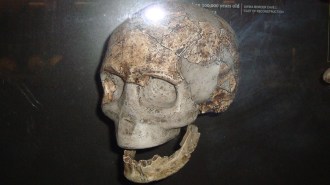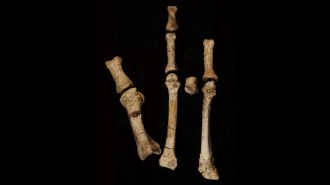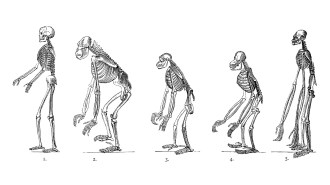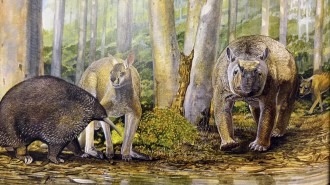Ancestral split in Africa, China
From Tempe, Arizona, at a meeting of the American Association of Physical Anthropologists
Homo erectus, the species usually regarded as the precursor of Homo sapiens, developed markedly different forms of behavior and social organization in Africa and China, says David E. Hopwood of the State University of New York at Binghamton.
In eastern Africa, H. erectus fashioned increasingly complex and diverse stone tools from around 1.8 million to 300,000 years ago, Hopwood contends. Occupation sites grew more numerous throughout that time. Many of them were eventually separated by a distance of only 1 to 2 miles, reflecting the social networking that was needed to organize travels to distant outcroppings to retrieve stones suitable for tools, Hopwood says.
In contrast, H. erectus artifacts found at sites in China from the same time span exhibit no substantial changes in toolmaking. Chinese sites are far more distantly spaced on the landscape, indicating little contact between inhabitants of different locations.
Intense competition for food with large predators, in an environment subject to frequent changes, prompted African H. erectus groups to invent new tools and forge cooperative bonds, Hopwood theorizes. Relatively stable environmental conditions in China encouraged more consistency in toolmaking among groups that had no need for regular interaction.
****************
If you have a comment on this article that you would like considered for publication in Science News, send it to editors@sciencenews.org. Please include your name and location.







